What is an AI Robot and What are its Applications?
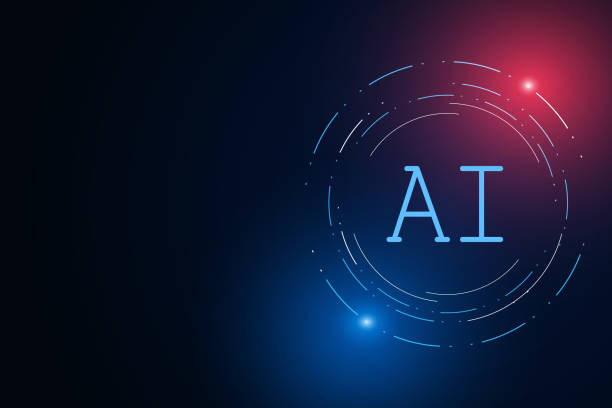
#AI Robot is a combination of artificial intelligence and robotics.
These robots are not only capable of performing physical tasks but can also analyze data, learn, and make decisions using AI algorithms.
The applications of these robots are vast, including:
- Industry: Smart robots are used in production lines, quality inspection, and packaging.
- Healthcare: Surgical robots, robotic nurses, and medical assistants.
- Customer Service: Chatbots and telephone answering robots.
- Education: Educational robots and tutoring assistants.
- Military Affairs: Reconnaissance and bomb disposal robots.
In summary, #AI Robot is an intelligent machine capable of performing complex tasks and data-driven decisions.
These robots perceive their surroundings and interact with them using sensors and complex algorithms.
The primary goal of designing and developing #AI Robot is to increase productivity, reduce costs, and improve the quality of human life.
Artificial intelligence and robotics are two key areas that play a significant role in the development of these robots.
Did you know that your company’s website is the first point of contact for 75% of potential customers?
Your website is the face of your brand. With **RasaWeb**’s corporate website design services, build an online presence that earns customer trust.
✅ Create a professional and lasting image for your brand
✅ Attract target customers and increase online credibility
⚡ Get free consultation from **RasaWeb** experts!
Main Components of AI Robots

An AI robot consists of several main parts:
- Sensors: This section is responsible for collecting information from the surrounding environment.
Sensors can include cameras, microphones, temperature sensors, pressure sensors, etc. - Processors: This section is responsible for analyzing collected data and making decisions.
Processors typically consist of computers or microcontrollers. - Actuators: This section is responsible for performing physical operations.
Actuators can include motors, pumps, robotic arms, etc. - AI Software: This section is responsible for training and improving the robot’s performance.
AI software typically consists of machine learning algorithms, neural networks, etc.
The combination of these components enables the AI robot to perform complex tasks that were previously only possible for humans.
For example, an AI robot can detect a faulty part on a production line, care for a patient in a hospital, or deliver a postal package to a doorstep.
The use of AI robots in various industries is rapidly increasing, and they are expected to play a more significant role in our lives in the future.
Types of AI Robots Based on Application

AI robots are divided into different types based on their applications:
- Industrial Robots: These robots are used in production lines and factories for repetitive and dangerous tasks.
- Medical Robots: These robots are used in surgery, patient care, and rehabilitation.
- Service Robots: These robots are used in hotels, restaurants, and shopping centers to provide services to customers.
- Military Robots: These robots are used in reconnaissance, bomb disposal, and military operations.
- Educational Robots: These robots are used in schools and universities to teach complex concepts to students.
Each of these robot types has its own specific features and capabilities.
For example, industrial robots typically have powerful and precise arms, while medical robots must be very delicate and sensitive.
#AI Robot is constantly evolving and improving with technological advancements, and we will soon witness a wider presence of these robots in our daily lives.
| Robot Type | Application |
|---|---|
| Industrial | Production lines, quality inspection |
| Medical | Surgery, patient care |
| Service | Providing services in hotels and restaurants |
Advantages of Using AI Robots
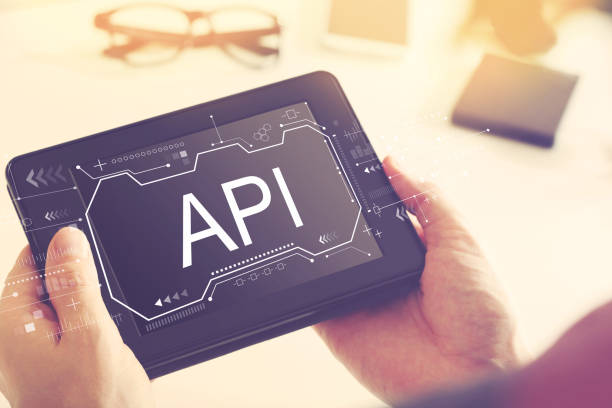
The use of AI robots offers many advantages, including:
- Increased Productivity: Robots can work continuously and tirelessly, leading to increased productivity.
- Cost Reduction: Robots can reduce labor costs and human errors.
- Improved Quality: Robots can perform tasks with higher accuracy and quality.
- Enhanced Safety: Robots can perform dangerous tasks instead of humans, leading to increased safety.
- Performing Repetitive Tasks: Robots are very suitable for performing repetitive and tedious tasks, which allows humans to focus on more creative and important tasks.
By offering these advantages, #AI Robot helps companies and organizations improve their performance and achieve greater competitiveness.
These robots are applicable not only in large industries but also in small and medium-sized businesses, where they can contribute to their growth and development.
Advantages of smart robots also impact increasing operational speed and accuracy.
Does your current website build the trust that potential customers should have in your business? If not, it’s time to get a professional and impactful corporate website with RasaWeb.
✅ Fully custom design tailored to your brand identity
✅ Increase lead generation and enhance your business credibility in the eyes of customers⚡ Contact us for a free consultation!
Challenges in the Development of AI Robots
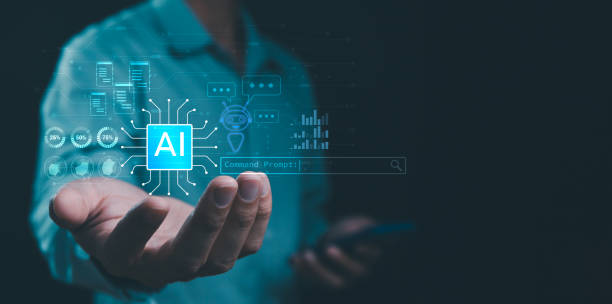
The development of AI robots faces numerous challenges, including:
- High Cost: Developing and implementing AI robots usually involves high costs.
- Technical Complexity: Designing and building AI robots requires high technical knowledge and expertise.
- Ethical Issues: The use of AI robots can raise numerous ethical issues, including those related to privacy, security, and accountability.
- Legal Limitations: The use of AI robots may face legal restrictions.
- Social Concerns: Some people are concerned that AI robots will lead to job losses and increased social inequality.
Despite these challenges, the development of #AI Robot is rapidly progressing, and it is expected that many of these challenges will be overcome through the efforts of researchers and industry professionals.
To address ethical and social issues, it is essential for policymakers and civil society to actively participate in this field.
#AI Robot has high potential to improve human lives, but it must be used responsibly and with all aspects considered.
The Future of AI Robots
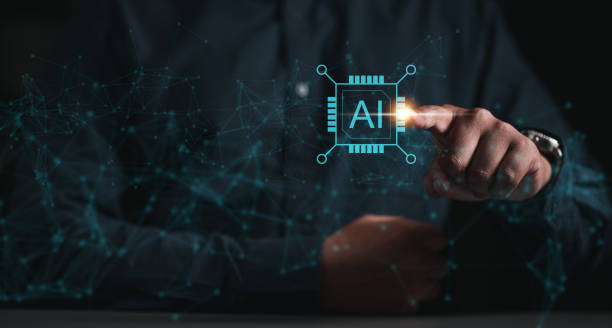
The future of AI robots is very bright and promising.
With technological advancements, AI robots are expected to be capable of performing more complex and diverse tasks.
Some predictions regarding the future of AI robots include:
- Increased Use in Various Industries: AI robots will be more widely used in various industries, including manufacturing, healthcare, services, and education.
- Development of Autonomous Robots: Autonomous robots, including self-driving cars and drones, will play a more significant role in transportation and logistics.
- Development of Humanoid Robots: Humanoid robots capable of performing human tasks will be more widely used in homes and workplaces.
- Development of Social Robots: Social robots capable of interacting with humans will be more widely used in the care of the elderly, children, and people with disabilities.
- Development of Smarter Robots: Smarter robots capable of learning, decision-making, and solving complex problems will play a more significant role in our lives.
By offering these capabilities, #AI Robot helps us to have a better life and face new challenges.
#AI Robot is not just a powerful tool, but an intelligent partner that can assist us in performing tasks and improving our quality of life.
The future of AI robots holds immense potential to change the world.
Impact of AI Robots on the Job Market

One of the main concerns regarding AI robots is their impact on the job market.
Some people are worried that AI robots will lead to job losses and increased unemployment.
While these concerns are not unfounded, it should be noted that AI robots can also create new job opportunities.
For example:
- Creation of New Jobs: The development, design, manufacturing, maintenance, and repair of AI robots require skilled human labor, which can lead to the creation of new jobs.
- Increased Productivity and Economic Growth: AI robots can increase productivity and economic growth, which can lead to the creation of new jobs in other industries.
- Changing Nature of Jobs: AI robots can perform repetitive and tedious tasks instead of humans, allowing humans to focus on more creative and important tasks.
To counter the negative impacts of AI robots on the job market, governments, companies, and individuals must pay more attention to training and upskilling the workforce.
Additionally, appropriate support policies should be considered for individuals who lose their jobs due to the use of AI robots.
#AI Robot, by creating these opportunities and challenges, requires a comprehensive and balanced approach to managing its impact on the job market.
| Impact | Description |
|---|---|
| Creation of new jobs | Development and maintenance of robots |
| Increased productivity | Economic growth and job opportunities |
| Changing nature of jobs | Focus on creative tasks |
Ethical Issues in the Use of AI Robots

The use of AI robots raises several ethical issues that must be addressed:
- Privacy: AI robots can collect a lot of information about us, which can lead to privacy breaches.
- Security: AI robots can be vulnerable to cyber attacks and used for malicious purposes.
- Accountability: If an AI robot causes harm, determining responsibility is difficult.
- Discrimination: AI robots can act discriminatorily based on their training data.
- Control: Control of AI robots must remain in human hands, and robots should not be allowed to make independent decisions.
To resolve these ethical issues, it is necessary to develop specific standards and regulations for the development and use of AI robots.
Additionally, ethical training should be provided to developers and users of AI robots.
#AI Robot, by creating these ethical challenges, requires a responsible and informed approach to its development and use.
Ethical issues concerning robots must be seriously examined.
Did you know that a weak corporate website loses you many opportunities daily? Solve this problem forever with professional corporate website design by RasaWeb!
✅ Create a powerful and reliable image for your brand
✅ Targeted attraction of new customers and increased sales
⚡ [Get a free website design consultation]
How to Build an AI Robot?
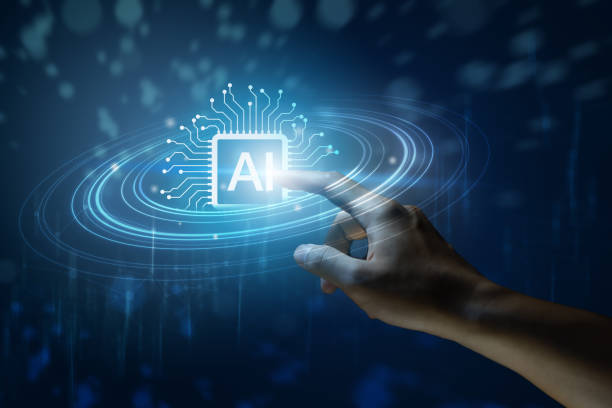
Building an AI robot requires knowledge and expertise in various fields, including robotics, artificial intelligence, programming, and electronics.
The general steps for building an AI robot are:
- Define the Goal: First, you must specify the purpose of building the robot.
What is the robot being built for? What tasks should it perform? - Select Components: Then, you must choose the necessary components for building the robot, including sensors, processors, actuators, and AI software.
- Design and Construction: After selecting the components, you must design and build the robot.
This stage includes mechanical design, electronic design, and programming. - Training and Testing: After building the robot, you must train and test it to ensure it functions correctly.
- Improvement and Optimization: Finally, you must improve and optimize the robot to enhance its performance.
Building an #AI Robot is a complex and time-consuming project, but with effort and perseverance, you can create an intelligent robot that helps you perform tasks.
Using online educational resources, participating in training courses, and collaborating with experts can help you on this path.
Robot building tutorials can be a good starting point.
AI Robot in Iran: Prospects and Challenges

The development of AI robots in Iran also faces its unique challenges and opportunities.
Iran has high potential for developing this technology but also confronts challenges:
- Potentials: Iran has a skilled and talented workforce in engineering and computer science.
Furthermore, Iran possesses suitable infrastructure for research and development in artificial intelligence and robotics. - Challenges: Budget shortages, economic sanctions, and limited access to advanced technologies are among the challenges facing the development of AI robots in Iran.
Despite these challenges, significant efforts have been made to develop AI robots in Iran.
Universities, research centers, and knowledge-based companies are developing smart robots for various applications.
For example, industrial robots, medical robots, and service robots are currently under development in Iran.
With government and private sector support, the development of this technology in Iran can be accelerated, achieving a suitable position in this field.
#AI Robot in Iran can play an important role in the country’s economic and social development.
Frequently Asked Questions
| Question | Answer |
|---|---|
| What is an AI robot? | A robot that uses AI capabilities to understand the environment, reason, learn, and make decisions to independently perform complex tasks. |
| What is the main difference between a regular robot and an AI robot? | AI robots can learn and adapt to their environment, while regular robots usually operate based on fixed, predetermined programming. |
| In what areas are AI robots used? | In fields such as industry (production lines), medicine (robotic surgeries), services (customer support, smart vacuum cleaners), exploration (space and underwater), and entertainment. |
| How do AI robots learn? | They acquire new skills by analyzing large data sets and identifying patterns through Machine Learning and Deep Learning algorithms. |
| Can AI robots have emotions? | Currently, no. They can identify or simulate emotions, but they do not experience real emotions like humans. |
| What are the most important advantages of using AI robots? | Increased productivity, reduced human error, performing dangerous or repetitive tasks, and providing new and efficient services. |
| What challenges exist in the development of AI robots? | Need for abundant and high-quality data, complexity of algorithms, ethical issues, cybersecurity, and high research and development costs. |
| Are AI robots dangerous to humans? | With adherence to safe design principles and ethical regulations, no. Concerns are more related to social and economic impacts such as changes in the job market. |
| What is an example of an AI robot in daily life? | Smart vacuum robots (like Roomba) that automatically map and clean homes, or smart voice assistants (like Siri and Alexa). |
| How is the future of AI robots predicted? | They are expected to become smarter, more autonomous, and capable of more complex interactions with humans, playing a more prominent role in industry, medicine, transportation, and daily life. |
And other advertising agency services by RasaWeb in the field of advertising
- Smart Advertorial: An innovative service to increase customer acquisition through custom programming.
- Smart Content Strategy: A combination of creativity and technology for campaign management using real data.
- Smart Brand Identity: A professional solution for analyzing customer behavior with a focus on precise target audience segmentation.
- Smart Sales Automation: An innovative service to increase sales through marketing automation.
- Smart Digital Branding: A combination of creativity and technology for online growth through attractive UI design.
And hundreds of other services in the field of internet advertising, advertising consultation, and organizational solutions
Internet Advertising | Advertising Strategy | Advertorial
Resources
Complete Guide to Artificial Intelligence
Robotics and the Future of Jobs
Applications of Artificial Intelligence in Industry
How to Build a Smart Robot?
? With RasaWeb Afarin, your business’s future in the digital world is guaranteed! With our expertise in providing comprehensive digital marketing solutions, including corporate website design and advanced SEO strategies, we transform your online presence and accompany you on the path to sustainable growth and success.
📍 Tehran, Mirdamad Street, next to Bank Markazi, Southern Kazeroon Alley, Ramin Alley, No. 6



